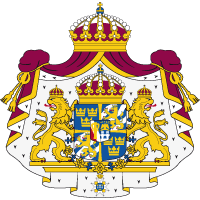The Royal Palace's History
The history of the Royal Palace goes back many centuries. Extensive excavations of the surrounding area (Helgeandsholmen) between 1978 and 1980 revealed traces of very ancient timber structures, dateable to the end of the 10th century.
These finds have been variously interpreted. Some take them as proof that a fortress already existed on Helgeandsholmen at the end of the 10th century, while a more circumspect theory is that there were barriers of piling in the shipping lane from Saltsjön ("Salt Sea") into Lake Mälaren.
Rimkrönikan, the Swedish medieval rhyming chronicle, states that in the mid-13th century Birger Jarl had a fortress built where the Royal Palace now stands.
According to the latest research, this tradition is in all probability correct. The fortress consisted of two parts: the keep had a large, walled bailey.
The thick walls were built at first of granite rubble, but as they gained height, brick was used instead. The change of materials suggests that this building carried a great deal of prestige, brick being a much more costly building material than stone.
Much of the north wing of the Royal Palace as we know it today has survived from the old Castle. The Baroque façade conceals medieval towers with loopholes.
Gustav Vasa
In 1521 Gustav Vasa seceded from the 1397 Union of Kalmar between Denmark, Norway, Sweden and Finland.
This marked the beginning of the modern nation state of Sweden, and the Castle of Three Crowns became the principal residence of the monarchy.
Renaissance and the "Great Power Period"
Under the Vasa monarchs, however, the medieval fortress was turned into a magnificent Renaissance Palace, partly under the direction of the Dutch architect Willem Boy.
During the "Great Power Period", after the Peace of West-phalia in 1648, extensive alterations were planned for the Palace, in keeping with Sweden's new-found status.
Work did not actually begin, however, until 1692, under the direction of the Palace Architect Nicodemus Tessin the Younger.
The disastrous fire of 1697
It was then that the north wing of the Palace, overlooking Norrbro, acquired the stern Roman Baroque exterior we see today.
A disastrous fire on May 7, 1697 destroyed practically all of the old Palace, but the newly altered north wing was left more or less unscathed.
Six weeks after the fire, Tessin submitted drawings for the new Palace to the Swedish government. The plan was for the new Palace to be built in about five years.
A new palace
In the event, the royal family was not able to move back in until 1754, nearly sixty years after the fire.
In spite of the new Palace taking such a long time to build, the 1697 drawings were implicitly complied with. Work on the interiors began in the mid-1730s under the direction of the architect Carl Hårleman.
Façades
Each of the four façades of the Royal Palace has its own distinctive character. The western one, overlooking the outer courtyard, was the King's façade and is appropriat-ely decorated with masculine and marshal attributes.
The Western Archway includes the Western Staircase, which was also the King's.
The east side of the Palace was the Queen's - the feminine side. The Eastern Archway includes the Queen's Staircase.
The east façade of the Palace is decorated with colossal pilasters, the reason being that in the old days it was visible all the way from Ladugårdsgärde (the area surrounding the present-day Telegraph Tower). The south façade represents the nation.
Miniature garden - gigantic triumphal arch
The eastern part of the Palace includes Logården ("the Shot Yard"), which is a miniature palace garden.
The centre of it, in the form of a gigantic triumphal arch, is the façade of the monumental Southern Archway, which is flanked by the Hall of State and the Royal Chapel: the Altar and Throne were the two poles of the good polity.
The north side of the Palace, overlooking Norrbro and Gustav Adolfs Torg, represents the more gentle aspect of royalty, since the main apartments of the King and Queen face this direction.
Centre of government
Now the Palace was built, not only as the principal residence of the Swedish royal family, but also as the nerve centre of Swedish government.
Offices were fitted out here for the cabinet and the ministries, the main debating chamber of the Swedish Riksdag (parliament) was here, and the Royal Library - the national library, in other words - was housed under the same roof.
The Royal Palace, quite simply, was a Sweden in miniature.
Top image: The Royal Palace of Stockholm, viewed from the northeast. Copperplate engraving by Jean Eric Rehn after a sketch by Palmcrantz.
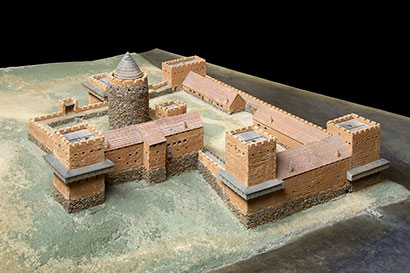
Model of (predecessor to) the Tre Kronor Palace, as it is believed to have looked in the 14th century. Viewed here from the south east, diagonally from above. Photo: Alexis Daflos/Royalpalaces.se
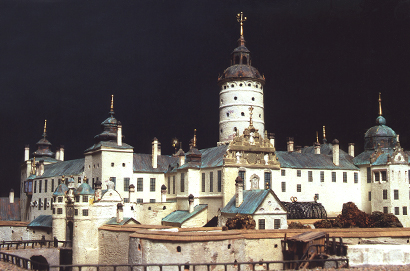
The Tre Kronor Palace in 1663. Several hundred people lived and worked here: the king, the royal court, the country's administration, maids and manual workers. Photo: Alexis Daflos/Royalpalaces.se
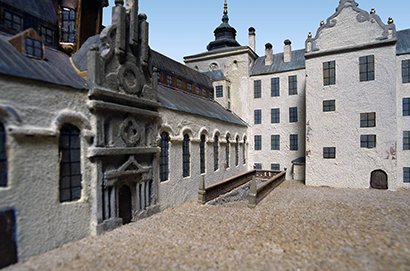
The courtyard of the Tre Kronor Palace. The palace was the permanent residence of the king and the nation's entire administration. Photo: Alexis Daflos/Royalpalaces.se
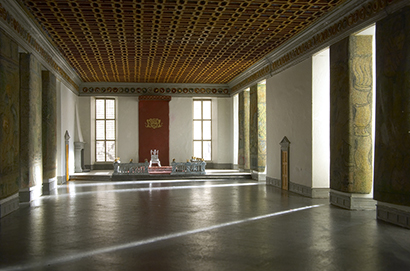
The Hall of State at the Tre Kronor Palace, interior, 1672. The model by Mattias Frihammar can be seen at the Tre Kronor Museum. Photo: Alexis Daflos/Royalpalaces.se
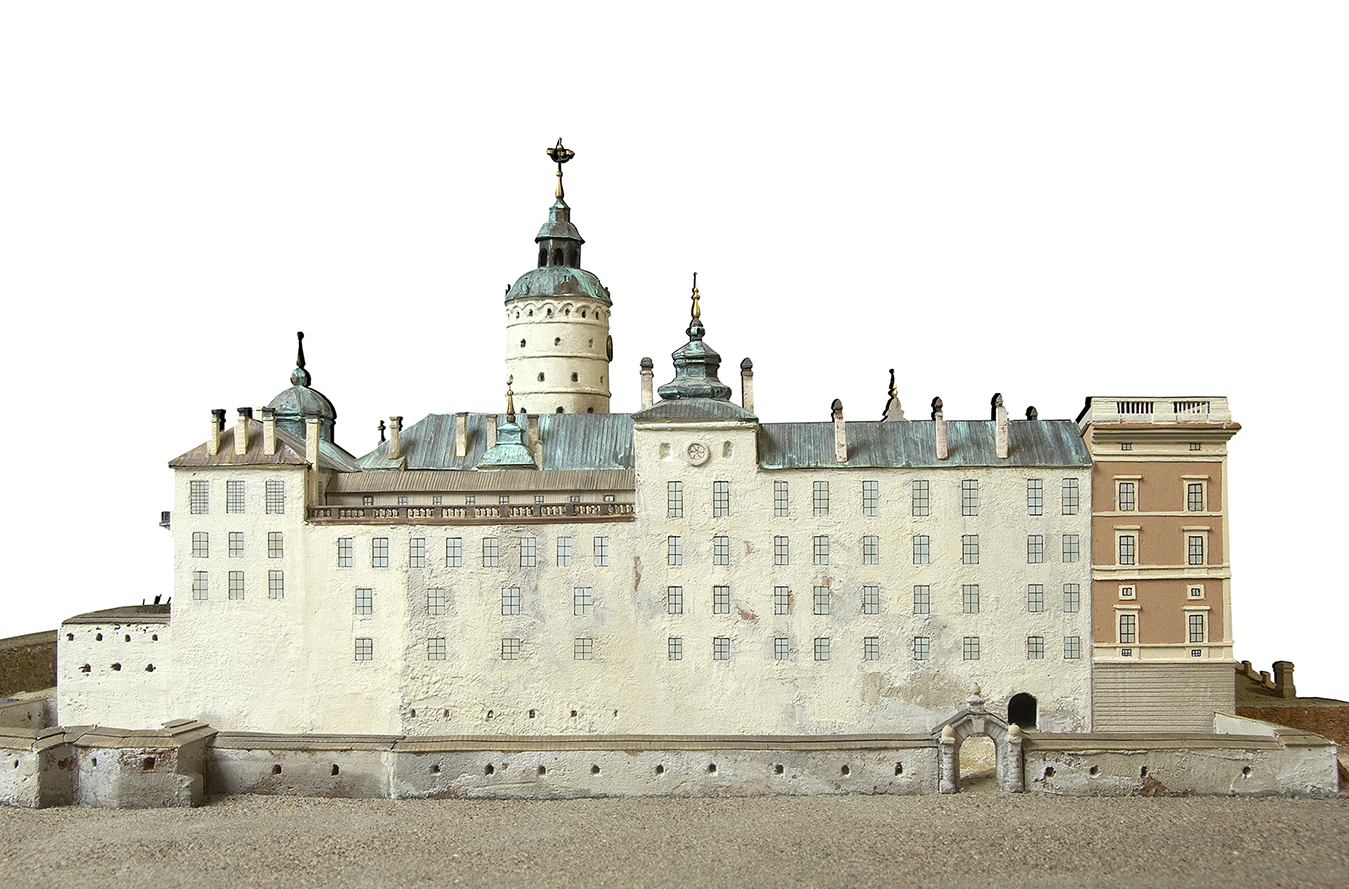
The Tre Kronor Palace, 1697. In just a few years (1692-1695), the North Wing was built in its current form. The fire of 7 May 1697 destroyed much of the palace. The North Wing escaped relatively unharmed, although the interiors were badly damaged. Photo: Alexis Daflos/Royalpalaces.se
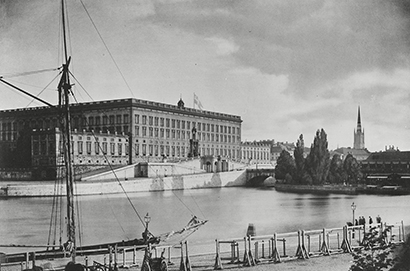
Six weeks after the catastrophic fire of 1697, the architect Tessin presented plans for the new palace to the Swedish government. According to these plans, construction would take around six years. However, the royal family were not able to move back into the new palace until December 1754. Photo from the late 19th century, by photographer Johannes Jaeger.
